Diet Doctor Podcast #4 – Dr Joseph Antoun
Som CEO för L-Nutra ligger Joseph i framkant när det gäller att förmedla det bästa från forskningen kring långt liv. Fasta kanske inte är den rätta metoden för alla, men efter att ha lyssnat till dr Joseph Antoun får du praktiska tips på hur du kan få det att fungera för dig och hur du kan maximera vinsterna för din hälsa.
Edit 2018-10-15: På vår engelska sida har vi publicerat ett klargörande kring det här avsnittet och de produkter som nämns. Länk till det inlägget här.
Lyssna här
Du kan lyssna på avsnitt fyra via PodBean (enbart ljud) eller på YouTube (ljud och video), båda länkarna finns ovan. Vår podcast är också tillgänglig via Apple Podcasts och andra podcasttjänster. Prenumerera gärna och lämna ett omdöme, det hjälper verkligen till att sprida budskapet.
Och… om du är medlem (första månaden gratis) kan du ta del av kommande avsnitt här redan nu. (Med ditt svenska medlemskap kan du logga in även på vår engelska sida.)
Innehåll
1:46 Vad fick dr Joseph Antoun att börja fasta?
7:30 Att göra business av fasta
13:43 Effekterna av återkommande fasta
15:58 Olika typer av fasta; tidsbegränsat ätande, periodisk fasta, ADF, kort fasta, längre fasta
17:55 Tidsbegränsat ätande
25:00 Periodisk fasta
26:15 ADF (att alternera fastedagarna)
28:00 Kort fasta, 2-3 dagar
30:15 Längre fasta, 4-5 dagar
34:58 Vad ska man äta om man tillämpar någon typ av fasta?
41:30 Är fasta det rätta valet för alla?
44:30 Ska man fasta längre än fem dagar?
46:30 Slutord
Transkription (på engelska)
Dr. Bret Scher: Welcome to the DietDoctor podcast with Bret. Today I’m joined by Dr. Joseph Antoun from L-Nutra and I’ve got to look at my notes here to tell you about all of his degrees and his whole introduction. He has M.D. and his Masters degree from St. Joseph University, he finished degrees in public policy and public health at Harvard and Johns Hopkins, he is the CEO of Health Systems Reforms, he is the co-director of the Center for Health Policy at the University of Chicago, he’s a professor of health at the Buck Institute for research in aging and he’s the CEO of L-Nutra. Now that’s quite a pedigree on Dr. Joseph here.
We have a fascinating discussion about fasting. And fasting is such a hot topic right now, but what exactly does it mean? There’s intermittent fasting, there’s time restricted eating, there’s short-term fasting and long-term fasting. So what do they mean and what do they mean for you as an individual? Where are you going to get your biggest bang for your buck, so to speak?
Because we all want the maximum amount of benefit for the least amount of effort. And when it comes to fasting it’s a little confusing, people are thrown around terms like mTOR and AMP kinase and PKA and… We want to know what this means for our health, whether it’s for treating diseases, preventing diseases, promoting longevity and our health span and we get into all of that with Dr. Joseph today.
So I really hope you enjoy this episode, it’s a hot topic that touches everybody, something everybody can do today to help improve their health. So thanks for listening, if you want to learn more you can go to DietDoctor.com. Find more about me at lowcarbcardiologist.com and about Dr. Joseph Antoun at L-Nutra.com. Thanks again and enjoy this interview. Thank you so much for joining us at the DietDoctor podcast.
Dr. Joseph Antoun: Thanks for having me today.
Bret: So here we are at the Mindshare Summit, this is a great event and you were on stage yesterday presenting on the future of health. And you’re presenting on fasting. Now I’d say there are probably a few years too late to talk about the future of fasting, it seems like fasting is here and am curious…
Now you’re a doctor, you have your medical degree, but you went into business and then found your way to L-Nutra, this company producing a fasting mimicking diet. So I’m curious, give us a little background on your progression and how you got to this point.
Joseph: It all started when I was doing my rotations in med school and I found out that the healthcare we were giving was not ideal. I was frustrated with two things. Number one, we’re not giving solutions that heal the body or trying to diagnose a symptom or identify a symptom trying to find the reason for it and then which disease and then give a pill or give a medical or surgical treatment. We were not doing anything to keep people healthier longer.
And the second call was… there was a little bit of discrimination whether you have the ability to pay, whether you can access the best medication or the most expensive one or not. That kind of created a frustration in me and I wanted to really go out and help changing the healthcare systems around the world into giving fair access to medicine and to healthcare regardless of their ability to pay. But also to bring a big innovation in healthcare that keep people healthier longer rather than sicker longer.
Bret: So I guess you have sort of two different ways you’re approaching this. One is from the healthcare reform side, which you are very involved in, and the second is with the innovation of a fasting product, the fasting mimicking diet. So what specifically drew you to fasting as the path to help people with their health?
Joseph: Yes, so the first thing in my journey when I finished my med school is I went into health policy and public health study. I did my health policy at Harvard then I did my public health at Hopkins and I wanted to start a career in really finding what is the next big thing that’s going to heal or prevent a disease for billions of people around the world. And the first path in this journey and a lot of professors and advisors said, ”Well first learn the biotech sector. Learn how we discover, how we bring innovation in healthcare.”
So I joined a company called Eli Lilly and Company or mainly known as Lilly for most people and this is where I learned the business of how you innovate, how you launch product and how you make them accessible to people around the world. And after that journey, my second hunger which was for something that would really change the world, I was looking for something like that.
And I actually met a CEO of a company called the Buck Institute for Research on Aging. And he asked me a question that changed my life. And the question he asked me was… He said, ”Dr. Antoun, as an expert in health policy and public health why the healthcare system still treats or think about the top four killers today as if they’re completely independent? Meaning Alzheimer’s, cardiovascular disease, diabetes and cancer. So why you still treat them independently?”
I was like, ”What do you mean? They’re completely independent diseases.” And he said, ”If they were really independent, why you don’t get Alzheimer’s at age 20? Why you don’t get your first cardiovascular or heart attack at age 22?” You actually get most of these diseases at later stage of life. So the mother of these diseases is really aging. And the way you age and the quality at which you age determines the onset of these diseases.
And he said, ”For an ideal public health system to really keep people healthier longer ”the system should focus on how we age. ”And if we have people age healthier longer then we’re pushing the onset of these chronic disease to later stage in life.” And that was a fascinating statement for me and I started looking into aging as a field and I started to look into are there technologies, is there research in aging that is bringing any product or any service?
Bret: So how long ago was that?
Joseph: That was almost 7 years ago today. In my big search I start traveling the US looking for a lab or looking for a technology in aging, because I knew how the healthcare system works, I knew how reimbursement policy works. And you need a service, you need a product for them to consider and then to reimburse or to price and create a track for it.
And aging up until today is not recognized as… I mean is a physiological natural process but it is a driver of a lot of diseases, so even with the FDA we don’t have a track for aging to reimburse the technology for aging or even to approve it. And I started looking around and traveling across the US trying to find any intervention that can help us age healthier and everyone was pointing actually at the University of Southern California and specifically at the leader of the longevity Institute over there, his name is Prof. Valter Longo.
And he spent all his life working on understanding how we age and how we can slow down or the pace of aging, optimizing the quality of aging. And one of his big discoveries was that fasting could be a very impactful way to slow biological aging. So we took a trip, we met in San Francisco Valter and I, professor Longo along with Brian Kennedy, the CEO of the Buck Institute. And it was an unbelievable meeting where the three of us allied and decided to bring fasting to the market and launch a marketer on fasting in aging which didn’t exist at that time.
Bret: Yeah, that was a fateful day for sure. So the joke around fasting though is, ”How to build a business around telling people not to eat anything?” That’s the joke.
You can’t sell anything, you’re taking things away. So for that reason it almost seemed like nobody wants to research it, nobody wants to promote it.
But then you have groups like Jason Fung and Megan Ramos up in Canada with the intensive dietary management program having great success with fasting. And you took another approach of saying, ”Let’s give food, so people aren’t completely fasting, but food that mimics a fast.” And then you have some science behind this as well. So lead us through the science a little bit of what you have to backup.
Joseph: Fasting is critical actually to balance our life and the way we age. If you think about it humanity lived with fasting for hundreds of thousands of years. It was imposed on us because food was scarce and think about it 1 million years ago or 300,000 years ago, when we didn’t have readily food available, we didn’t have refrigeration and a supply chain of food. And our ancestors had to search for food and it wasn’t always available especially at winter times and difficult times and wartime.
So fasting lived with us for such a long period that it became part of our diet. And then after that comes religion. All top five religions actually agree on one word which is ”fasting”. It’s not even ”prayer” because you have ”meditation” in some religious, but fasting is the common denominator. So religion actually carried fasting over even when food became available. And it was just up until the last 100 or 200 years when we lost this practice.
Or we kind of do it in a short-cutted way and we feast after the fast, so we’re not really fasting. And we lost that tradition and now we eat multiple times a day. And you remember, you know, in the 90s the big recommendations, you eat small portions every few hours, which is you know today proven not to be an optimal way.
Bret: Promoted by the snack industry for sure.
Joseph: Yeah, and you end up eating every little bit every day multiple times and your body is just storing fat, your body is just growing faster and is aging at a faster rate. And this is why we see the onset of the chronic diseases happening at earlier stage of life. We see a lot of people now with cancer at age 40 and 50, with diabetes at age 40 and now childhood diabetes which is really a very serious issue that we need to deal with.
So fasting really plays a great role into counterbalancing this unhealthy lifestyle and the body uses it as a period to recover from the damage is happening to the body and we’re going to talk I guess in more details about types of fasting and which one is for what. But you’re asking me about our approach. So USC, the University of Southern California, specifically the Longevity Institute, has been receiving a lot of grants from the National Institute of Health to look at fasting and aging and to understand what is the ideal way of fasting.
And there’s a short term fasting I will talk more about it or intermittent fasting, but then they identified that longer-term fast, especially if you reach five days, is really important for fasting to not only help you lose weight and have metabolic effects, but actually to intervene at the cellular level and the way the cells function and actually even change some of the nature of the cells from existing cells to stem cells and push the stem cells in the body.
And in order to reach five days when you went to human trials or when USC went to human trials, and asked people to fast for five days, compliance was very little as you can expect. It’s so difficult for us today in this environment of food and marketing and deliveries to have people fast for five days. So the Longevity Institute then thought about a way to mimic fasting with food.
And the National Institute of Health and a lot of donors were very receptive to this idea because not only that allows fasting to become practical now, but it actually makes it safer. You don’t want a person on the third or fourth day of fasting to feel a little bit, you know, to have a hypoglycemia or to feel a severe headache or weaning from food etc.
So the idea came about when the Longevity Institute was trying to do the cancer trials with fasting and they couldn’t really recruit people and they tagged team with Mayo Clinic in order to try to increase the recruitment rate, but it was very difficult. People could not fast for five days.
So out of that necessity the fasting mimicking diet was born and they tried to look into what could be the ingredients that we can feed people and the body wouldn’t really recognize these ingredients or the hormones and the responses in the blood and then in the cell identifying the food are actually not triggered. So we call them the nutrient sensing pathway or sensing the food signals.
Bret: So looking at insulin, looking at AMP kinase, looking at mTOR, specifically measuring whether those were activated or not was sort of the core of determining if the body felt it was fasting?
Joseph: Yes, definitely. So the two most important, if you want, triggers of nutrition when you eat is our proteins and our carbohydrates. And they go into the blood and as a response to carbs you have an insulin increase and a secretion increase and in response to protein you have an insulin like growth factor or IGF increase. At the cellular level these signals translate into different pathways, the PKA the rest pathways, mostly with the carbohydrates and sugar pathway and the mTOR pathway mostly with the protein and IGF pathway.
So the goal was not to spike the blood response to food with insulin and so like growth factor and at the cellular level not to trigger the PKA, the rest and the mTOR pathways. So the body would stay in a fasting mode although it is gaining nutrients and the fasting mimicking diet not only mimics fasting but it actually nourishes the body so it has the macronutrients, it has the micronutrients, it has vitamins etc. helping the body safely move over five days and actually enhance the effect of fasting.
Bret: Very interesting and one concept that I really like about the cyclical nature of this is that mTOR gets a bad name because we say it fuels cell growth and it can stimulate cancer, but it also fuels muscle growth and allows us to grow and get stronger and prevent sarcopenia, so we don’t want it suppressed all the time, we want a cyclical nature.
So it seems that you’ve sort of rested on five days every three months, as the general recommendation. But the trial that you did was five days a month for three consecutive months and that showed a reduction in weight, a reduction in blood pressure, a reduction glucose, a reduction in IGF-I and was well tolerated. How did the transition happen from five days every month to five days every three months?
Joseph: It depends on the patient profile actually or the consumer profile. If you’re a person who you’re healthy otherwise you have a normal BMI, you’re not overweight or obese and you don’t have metabolic issues that you want to intervene on, you just want to do the fasting mimicking diet.
The product name is ProLon in the market for promoting longevity. But if you want to do that regimen to help your body age healthier, and we’re going to talk maybe a bit more about how that happens at the cellular level, then you do it once every two or three or four months. So this is you basically counterbalancing every three months if you want your lifestyle, but you already have a healthy lifestyle and you just want to do it to promote the stem cells and rejuvenation of the body.
Now if you have metabolic reasons to correct, if you are overweight or obese or you already have unhealthy levels of cholesterol or triglycerides or inflammation in the blood, you need to do a bigger intervention, so we recommend you do it once every month for three months.
And here we’re talking just five days in month one, five days in month two and then five days in month three. And once you see a correction in the weight and inflammation and other metrics – cholesterol, triglycerides, blood pressure and glucose in the blood then you can start alternating doing it once every two or three months.
Bret: I guess that’s what makes it so interesting is what’s the right protocol for each person because let’s be honest, people want the maximum benefit for the minimal effort so fasting can range from a 12-12 eating window or time restricted eating and 18-6 window, a 24 hour fast, a 3-hour fast, a 5-day fast, they’re all out there.
And the question always becomes, ”Where you’re going to get the maximum benefit?” And I guess the question has to start with what are your goals? So if your goals are weight loss, if your goals are improving mental clarity, if your goals are longevity and cell rejuvenation it might be different along the way.
So some people would be perfectly well served with an 18-6 and some people will need to go a little bit longer. Now there are people who have success with a water- only five day fast and part of that is you have to be very careful about how you break the fast. Does the same hold true for the fasting mimicking diet and when you break the fast you need to take care not to sort of overdo it and overwhelm your system?
Joseph: Yes so you touch a few points about the goal and the short-term versus long- term, so maybe here if you allow me to take two or three minutes to explain the different kinds of fasting and what each does to the body so that–
Bret: Sure, I’ve been carried away and I’m going too fast here.
Joseph: This is wonderful, this is the hottest topic. I don’t know if you noticed, but this May of 2018 the Food and Health survey, official publication, showed intermittent fasting to be the number one diet in the US especially among the younger population. So from being absent on any of the reports to becoming number one ahead of paleo or keto, ahead of other diets… So it is the topic of the day.
Let’s clarify it, there’s a lot of confusion, a lot of coverage on fasting, but then you see big headlines, ”Fasting reverses this, fasting does that”, and there are multiple ways of fasting and fasting is just not one thing that does everything. It depends on what kind of fast you do you get different results. So I want to start with what you alluded to which is few hours of fasting or what people still call intermittent fasting but it’s not actually… If you fast less than a day, your body doesn’t start producing ketone bodies and doesn’t really go biologically into fasting. When you fast for a few hours we call it time restricted eating.
Because what you’re doing is you’re limiting the window of time you’re eating during the day. Say you just have lunch and dinner and you limited… We call it time restricted eating because you are restricting the time of food within the window of just lunch to dinner and then you’re fasting during the night because you’re sleeping. And say you skip breakfast, so this is what you call today a 16-8 or 16 hours of fast and eight hours of food.
Time restricted eating is actually showing a lot of benefits because at least what you’re eating during the eight hours instead of just stalking those, instead of just pushing the body to grow, if you eat multiple times a day and be pushed by food, you’re counterbalancing that by a period of no food and a period where you allow the body to spend the calories that you at least ate.
So it’s a great short-term counterbalance to what you’d do in the eight hours of food and it’s actually showing good effects on maintaining healthy level of weight and other related metabolic factors.
Bret: And just to interject there, if you’re already following a ketogenic diet, that can also enhance the state of ketosis as well because you mentioned you have to go 24 hours of fasting to really get into ketosis, but if you’re already following a ketogenic diet, that’s where that 18-6 or 16-8 could be even more powerful.
Joseph: Definitely, and especially with ketogenic diets where you’re still having a certain level of proteins in the ketogenic diet and even more, so if you have animal source of proteins your body is really not getting into ketosis because it’s sensing the proteins and sensing… even the animal source triggers IGF and mTOR pathways.
So again the ketogenic diet is a big word and needs another discussion because there’s different level of ketogenic diet and some of them take really longer to get you into minor level of ketosis versus other ketogenic diet, but as you’re saying if you do the time restricted eating because you’re spending a good number of hours with no food you’re going to help enhancing getting the body into ketosis.
But here I want to say something which is really important for whomever is watching this episode which is that we’re still unsure whether you should do a 12-12 hour time restricted eating versus a 16-8. Intuitively you say, ”Okay if you last longer, a 16 hours it should be better”, and this is what a lot of people are doing, again called time restricted eating, but intermittent fasting is what the street name for it is.
But there are three major epidemiological studies showing that if you skip breakfast actually there is some correlation of a slight increase in mortality and the last of which is a study in the Journal of American College of Cardiology which was published a few months ago that showed a slight increase in mortality in the Spanish population that actually skips breakfast.
Now we’re not sure of this is because they’re fasting up to 16 hours or there is a bias which is most of people who skip breakfast or many I would say of the people who skip breakfast they actually eat late at night. So we don’t know whether this was because… and the study didn’t clarify whether the same people eat late at night or not, but a lot of us today in society that skip breakfast actually stay late at night and eat late at night which is even worse than skipping or not skipping breakfast.
Bret: They also tended to be heavier and smoked more and there are definitely some confounding variables in all three of those trials.
Joseph: Exactly. So we has as experts in science are a little bit still unsure whether we should really go all the way to 16 hours or we should say, you know, 12 hours is a healthy time restricted eating. And honestly I have one basis that I always use when I make any judgment around diet which is our body is what is today because it was tailored by nature existing and certain conditions for hundreds of thousands of years.
So my first rule of thumb when I think about anything presented to me in terms of diet or lifestyle, I try to match it with how hundreds of thousands of years our body grew and what are the circumstances. And typically a family 10,000 years ago would sleep when the sun is down, stay a little bit up, have lain near some kind of fire if that existed.
And in the next morning either you save some food or you go and you find your food. And you sleep for eight, nine hours and then you wake up and you search for food and you have your breakfast. So I tend to say closer to 12 would be definitely healthy. I don’t know if the 16 is healthier or not but I tend to say it’s safe to do a 12 hours of food and 12 hours of no food.
Bret: And that’s part of the problem with when you took about longevity or about fasting, we don’t have the comparative studies, we don’t have a 12-12 compared to an 18-6 compared to a five day in the randomized studies.
Which of course is what we need to say yes definitively. So we sort of have to do the best with what we have, with N=1 experiments, with clinical experiments, with the observational studies and just kind of put it all together and kind of make our best judgment.
Joseph: I agree and the study is going to come… it’s such a hot topic, such an easy practice. The time restricted eating or time restricted feeding when you call it in mice or pre-clinical trial, it’s such a hot topic today, I’m pretty sure there’s going to be data and there’s going to be science coming up on it.
Bret: That’s why I don’t like to use time restricted feeding because it makes me feel like a mouse, like I’m in a cage. No time restricted eating, yeah.
Joseph: But the media picked up as TRF, or time restricted feeding, and we’re trying to correct… a lot of my daily job today actually is to try to clarify concepts because it’s a delicate difference between a lot of different fasting and then people use the word fast or intermittent fast or fasting mimicking diet, but then you need to go a little bit into detail.
So for example the fasting mimicking diet we have, not knowing whether you should skip breakfast or not or whether you should eat something in the morning. You know, tradition and our mom tell us breakfast is the biggest meal and then intermittent fasting now is saying to skip breakfast. So what actually we have done, we have developed a fasting mimicking bar or a fasting mimicking meal, which then you can eat in the morning, you didn’t skip breakfast, you get your nutritional ingredients for the day.
But then you actually did mimic fasting for that so we found that to be a balance between what tradition and what, you know, not skipping breakfast or what your mom says, in a balance with what today, we’re all jumping into this intermittent fasting and time restricted eating and trying to prolong a little bit for night fast.
So we called it the fast bar and you’re going to see it soon being out on the market. So that was the shortest term of fast which is few hours a day. Then when you cross a day, when you reach a day of fast, you’re really starting biologically to be fasting and this is what really is called intermittent fasting, which has different ways of doing it.
You can fast for a day twice a week or what we call the 5:2 diet, which has been described in the literature for long time and then a gentleman by the name of Michael Mosley in Europe wrote a book about it and promoted it as well. And it basically asks you to eat 500 or less calories a day, so almost not eating, this is the way how you’d fast on it. And you do two days separate a week, say a Monday or a Thursday and it is relatively easy to do.
And it helps you mostly from a metabolic standpoint. So as you can imagine, instead of having seven days of full food, on two days you’re decreasing your food intake and therefore you’ll lose some weight and you’ll have metabolic improvements as well. So when it comes to cholesterol, inflammation, the blood, triglyceride etc.
And you would have to do it therefore kind of close to eight times a month, because you’re doing it twice a week. So that’s the minor form of it you can do it. 4:3 which is three days of fasting a week or you could do the most extreme form of it is alternate day fasting, meaning one day you fast, one that you eat, one that you fast, one day you eat. This form we’re not sure it’s even a healthy form and induces in the body what we call the yo-yo effect.
One day you’re eating full, the other day you’re almost fasting and it has impact on circadian rhythm, it has impact on your lifestyle and as you can imagine the body is a system of complex system of balances and homeostasis. You don’t want to disbalance that every other day.
Bret: And it seems important that the cyclical nature has to fit in there somewhere and at some point you lose that physiological cyclical nature in the body, just sort of cease it as being continuous. And I guess is unknown where that level is but maybe every other day it crosses that line.
Joseph: I agree and a lot of diets focus just on nutrition but we should understand the body is much more than that. You have the stress level and cortisol and you have the sleep level which is another determined for our well-being. So stress, sleep, socioeconomic factors and social connections and actually being active in society, these are all as important as nutrition and exercise to keep us healthy longer.
So the alternated fasting or what we call ADF is still… we’re not sure it’s a healthy form. The 5:2 seems to be more practical, you know, it does the job of helping you counterbalance from a weight perspective and seems to be a more common, you know, easily to be observed fasting. Then you move from intermittent fasting which is again a day or two or three a week then you go to a longer, which is two or three consecutive days of fasting, what we call short-term fast or STF.
So when you fast for two or three days, yes, you’re going to lose weight. So the common denominator of every fasting you do is to counterbalance weight and lose some weight or maintain healthy weight level. So definitely when you do it you’re going to lose some weight and you’ll improve metabolic factors, but when you touch day three you’re basically inducing what we call autophagy meaning you ask the cells to… because now for two or three consecutive days there’s no food coming in or nutrients coming in the blood, then the body asks the cells to go and look for debris and intracellular debris to eat and then to get the calories from it and optimize the function of the cell.
So now for the first time with fasting you’re touching on the cellular function. And autophagy was awarded the Nobel Prize of medicine in 2016 which is really an interesting award to autophagy which is linked to fasting, so we’re really excited about that. And if you go longer than the short-term fast… the short-term fast also could have some inconvenience, especially and probably at the muscle level.
When the body goes over the day and is really looking for calories it doesn’t only burn fat but it actually goes and extracts calories from the muscle as well. And what happens on a short-term fast, two to three days, there could be fat driven weight loss but also a lean body mass potentially a bit of loss. There is not enough in the literature for us to judge there, but this is always a suspicion, because as we know when you need calories you to muscle and fat together.
Bret: And that’s why it’s so important that people keep up some level of physical activity and exercise during fasting, although maybe not their usual intensity… we’ll get to that, I know. I keep interrupting you, but we’ll get to that.
Joseph: Yeah, definitely, in the shorter-term fast your body is not the depleted, you can still do exercise and just to try to… if not decrease the muscle loss, just to keep it to maintain it. And then when you go to longer-term fast which is close to five days, which is what mainly the Longevity Institute at the University of California is focused on, they were very much interested in cellular impact of fasting.
So when you cross the two, three days is like a company with suddenly no funds. The body with no food is like a company with no money. And you know, if I delay paying a check to a company, they’re going to wait just a little bit and then cash it afterwards and then the CEO of that company is not going to take drastic action to change the operations of the company.
So this is intermittent fasting, you delay expenditure, you know, you lose some little bit of weight and you spend a little bit of the calories that you had. Or what the CEO would have done would go to the bank and live a little bit on the reserves that they have. And you live off your fat reserve. The longer you go, like the short-term fast, two to three days, so the longer you go on a company not receiving a proper amount of funds, the CEO at the leadership of the company will start to restructure the operations and optimize the operations to do the best outcome out of whatever money you still have left.
So this is where the body is trying to do the same, it’s asking the cells to optimize their function with the short-term fast. Now if you go longer on day four and five, again going back to the example of the company, now you have to let go on the long- term, you know, and proper funding. You start letting go some of the employees and sometimes the ones that are not the most efficient and you empower and you live off the critical employees who are the real, you know, the most cost effective for the company.
And the body does the same thing when you cross day three of fast. On day four and day five we’re seeing, especially in mice trials and initial human trials, we’re seeing the body actually pushing the stem cells. Every organ has what we call stem cells which are young cells. They are there, to what we know historically, to help the organ heal from maybe physical damage. So if you cut your skin, or you go into a car accident, you know, you wait for few days and you heal from that.
So physical exercise, physical damage triggers the stem cells to repair. What we did not know is that if you stress your body enough with fasting, the absence of food, on day four and five the body pushes the stem cells to try to replace elderly cells or cells with any damage. And the goal is to bring more cost-effective younger cells rather than carry a little bit of a deadweight at the cellular level, not at a fat level, but now we’re still stressed on a five day fast that actually we try to get off the deadweight from a cellular standpoint.
Bret: So just to clarify, it wasn’t up to the five-day fast where the organ started to shrink, you started to get rid of some of the cells and that was the re-feeding where the stem cells came out and were produced or were they already been produced during the fasting stage?
Joseph: Yes this is great point. They started to be produced on day four and five, but then after you do the re-feed, they are actually bringing nutrients to these new stem cells to even flourish. But they start to proliferate at day four and five, at least this is what we’ve seen in most of the trials.
Bret: So mice trials, not yet human trials.
Joseph: No, in humans. So in mice actually three days of fast is equivalent to five days in human. And we have published an article in Cell Metabolism, if I’m not mistaking in 2014, and what it shows we had 39 patients, it wasn’t only preclinical, we had 39 patients and we showed a very high spike of stem cells circulating the body, we call them SPC or Mesenchymal circulating stem cells.
So we did show that the human trials and now we’re doing a lot of trials on even diseases and fasting to show whether the stem cells on day four and five and then after re-feeding flourishing, do they try to actually intercept or reverse a disease state? So we are really excited, we have 24 ongoing human trials now.
Bret: 24? And you already have data on multiple sclerosis and on autoimmunity reactions in humans, right?
Joseph: In humans there’s one data coming from Charité University in Berlin where they did fasting mimicking diet on cycle followed by a Mediterranean diet and it showed an improvement in quality of life in humans with multiple sclerosis. And now we are starting trials on MS, on multiple sclerosis, where we’re doing the fasting mimicking diet for several cycles.
Bret: So you brought up a good point there. They were doing a five day fast followed by a Mediterranean diet. So does it matter what you eat the rest of the time? Is this a cure-all that you can go back to your muffins and bagels and donuts and as long as you do your five days of fasting you’re good, or what do you see the science saying now?
Joseph: It does matter. There is no one-size-fits-all when it comes to different people, different bodies, different needs, but now even more important different diseases, so if you have MS you’re different than if you have cardiovascular disease and you’re different if you have Alzheimer’s so definitely…
You know, what they studied which is one cycle of fasting mimicking diet and then Mediterranean diet, it was just to test the safety on the fasting mimicking diet and the feasibility and then you know coming from Berlin, from Charité, they would look at the Mediterranean diet which is very popular there and considered a healthy long- term trial. It wasn’t really aimed specifically at multiple sclerosis.
Maybe you can have the fasting mimicking diet plus the ketogenic diet to be tried on such a disease, but is it was a grant given for such a protocol to see the safety on the fasting mimicking diet with multiple sclerosis and then what could be, you know, a daily diet which is a Mediterranean one that is mainly observed there, what the combination would do.
Bret: Yeah, there’s such an emphasis on protein, too much protein, not enough protein, because we obviously need it especially as we age and get older. I would love to see that kind of trial with a five day fast, with a high protein ketogenic, a low- protein ketogenic and see what kind of difference you see versus a more sort of a Mediterranean diet and see if there’s a difference between those and what kind of effects the fast has in each person… that would be fascinating.
Joseph: Yeah, definitely, and the results will differ depending on people, their bodies, but also their objective. If you were an athlete or say a bodybuilder and you specifically want to build muscles or you got a competition or you want to look good, you want to look perfect, you are going to consume a bit more proteins. Is not that we recommend it from the longevity perspective, but it’s what you’re going to do to push your muscle to grow.
And in that case you want to do from time to time a fasting mimicking diet to counterbalance the effect of protein in your body, so when your muscle grow… this is something really important for public health, when you’re over consuming proteins you’re pushing your body to grow. And the body grows towards it and it ages. When you grow you’re pushing aging and I always use this example, you know, the big muscular athletes, you don’t see them living to 100 or 105. And actually most of them, we lose them a little bit earlier than others.
They don’t become centenarians in most cases if you want. And the body is biologically pushed. You know, they inject testosterone growth factors and they actually eat a very high level of proteins. This is really triggering aging in the body. And it’s a very important discussion I think because we reacted to sugar in the 80s and 90s because it led to diabetes epidemic and we jumped on protein.
Protein is another nutrition component to the body and pushes the body to grow and age the same way insulin does. It’s is not by chance that when you eat sugar insulin increases and then when you eat protein we call the molecule that increases insulin ”like growth factor”. So they are both growth factors to the body.
And when you grow biologically, it’s like kicking the pedal in the car. You drive faster and you get sooner to the end. And what we are interested in our research is really how to keep people healthy longer and how to promote longevity and more importantly health span. And a lot of recommendations you see coming from USC and Prof. Valter Longo and the Longevity Institute as how to help people stay healthy longer.
It’s not necessarily to build muscle and be buff on the short-term. So yes, as you’re saying for some people you want to do fasting mimicking diet cycles with ketogenic diet, depending on their goal, and others you want to give more proteins if they really want to build muscle etc. So where I’m trying to build a point is different needs for different people and here you can tailor even further with the genetics and the microbiome and a lot of other details as well.
Bret: And age plays into that as well, because as we age we probably do start to need more protein just for maintaining our muscle mass and preventing sarcopenia. So how does this fast factor in as we age about 65, above 70 versus those who are 20, 30, 40?
Joseph: That’s a great point and actually the need for protein intake varies throughout your lifecycle. And we call it almost a U-shape where from age 0 to age 18 you definitely want to have protein. You want to give your kids milk and meat, etc, because they’re growing vertically even though their organs are growing, the body is growing.
And then after that the more you age the more… you have enough cells in the body that age enough or carry DNA damage enough that if you keep pushing them like proteins and during the replication, during that push because their age or they have damage they’re more prone to do a mistake and become cancerous cell. So as a mid- age adult, if you want, in my opinion is age 40 to 60 or 35 to 60, this is the peak of the risk of having high-protein diet, but enough age cells and cells are prone to the mistake to become cancerous.
But as you say when you grow older and you’re 70, 80 or 90 at that point the level of cell replication in response to food drops. So even if you eat the proteins the cells are not the mTOR pathways are not super active and doesn’t push cells to high-frequency for applications. So yes you have a lot of aged and damaged cells but actually they don’t respond to protein signals.
And this is where going back and having a good intake of protein is really important because you need to maintain muscle at that age, the risk of cancer is not as big as when you’re a mid-adult agent. And we see this even epidemiologically. People don’t die at age 90 and 100 from cancer, but mostly cardiovascular and Alzheimer’s etc. The cancer peaks at certain age, but then start dropping afterwards.
Bret: Interesting, it’d be interesting to see more data on that for sure. So as we’re touching on that then let’s transition to say, ”Who is this not right for?” People are going to listen and want to run right now and do cyclical five-day fast. Who would you say, ”Hold on, don’t rush to do this. Maybe is not right for you”?
Joseph: Yes so two years ago the first fasting mimicking diet was… a little bit less than two years it was launched on the market under the name of ProLon for promoting longevity… It’s a box, you get it through your physician or if you’re healthy enough you pass a self-assessment online and you can buy it. It’s five days of food that gets delivered to you and you eat it and your body remains in a fasting mode. It is not for everyone to do.
So definitely if you’re a pregnant woman you definitely do not want to fast the baby or fast during the pregnancy. If you are very old, if you eat it at an older age like we were talking, say an 80-year-old… you want to have high protein diets. You don’t want to fast your body probably at that age. If you’re a child not necessarily you need to fast, you need to grow.
And we have cautions as well. I mean definitely if you have allergies to some of the ingredients of the fasting mimicking diet. It is a plant-based natural diet, but some people still have allergies to nuts, or macadamia, or to cashew or two some of the ingredients. And there is a big, you know, watch out and hear if people have diabetes… We have a lot of research published on diabetes.
We haven’t done the human trials yet and a lot of people try to actually use it for diabetes. There’s a big cautioning in here. Should not do it you have a risk of hypoglycemia if you’re actually using insulin or using blood lowering sugar. So as much as we look forward in the future to further studies on diabetes, there’s definitely a warning here to not use it in this regard.
Bret: Yeah, that’s a great point because a lot of diabetes medications are where we can get into big trouble with fasting in general or even time restricted eating and then a five-day fast for sure. So I like that you have a sort of behind the safety wall of a physician that has to be from a physician and if someone wanted to try a five day water fast, I’d tell them same thing, ”If you’re on medications do not do it until you confer with your doctor.” I think it’s very important.
Joseph: I mean water fast has as a bit more warning, because it’s an extreme state of ”there’s no food” versus the fasting mimicking diet, so I agree with you. With water fast it’s going to be a little more difficult, have less compliance and now you step into it, if there is heat you don’t want to drive on water fast with high temperature etc. So it’s a little bit more extreme for folks who can do it–
Bret: If it’s hot. It’s that just for risk of dehydration?
Joseph: Yeah, dehydration, and then hypoglycemia when your body is spending a lot of calories or if you do some kind of exercise, because you’re really having almost no calories when you do pure water fast. You’re a little bit more prone to safety issues.
Bret: Yeah, and then you hear the stories of people doing three, four-month fasts and it’s remarkable, not that we would ever recommend it, but just that someone can do it, just the physiology of the human body is amazing that he can even do that but obviously under very, very careful guidance.
Joseph: Yeah, and I get a lot of questions about ”Why five days, why not 10 days?” And I, not knowing in the past… in my past I actually have done a couple of weeks of fast, three weeks and I just wanted to experiment with it but I had no clue about the science at that time.
Bret: Interesting.
Joseph: But we discover why I would recommend five days because you actually eluded that re-feeding is important. So instead of doing a long-term fast where even the stem cells trying to rescue, the body gets depletes because then you need to feed them as well. Everything gets shut down and depleted when you go on a long-term fast.
So yes, you have metabolic gains, you would not be obese on a long-term fast, you’re going to decrease inflammation, you’re going to improve your cholesterol, but you’re going to lose on the lean body mass, you’re going to lose muscle and bone density etc.
What we have found out in our research because we have tested shorter terms of fast which again we decided to go with the five days, because of the rejuvenation happening on day four and five, but then we recommend that you stop at five, sometimes six, sometimes seven, depending on the diseases, for autoimmune diseases we try to go longer because you do need to heal a damaged organ at that level.
So the MS trials for example that would be for seven days most probably, six or seven days. But then the re-feeding is as important so that you re-feed the stem cells. So the cyclicity is more important than the length and doing it cyclically multiple times and feeding the body again helps preventing the body from getting depressed or depleted on the long term.
Bret: That’s a great point. The cyclical nature I think is what’s so important here and you have different ways to do it. But as long as you stick with the cyclical cycle and find out what works for you, I think that’s a great point. Now I know you’re in a hot demand here at the conference, I want to be respectful of your time and thank you for coming to spend time with us at DietDoctor podcast. Any last words for our listeners and of course where can they go to learn more about you and L-Nutra?
Joseph: Well, thank you very much for hosting me today, I love this topic. I think the University of Southern California and the researchers are bringing back fasting in a practical way and this is what excites me the most. Every day you hear about a different diet, about new ways of doing things and a lot of it is fueled by interest or marketing dollars or business.
I think for the first time in history of nutrition or one of the few times where we’re bringing back a natural phenomenon, we’re bringing back a practice that was done for hundreds of thousands of years initially a for lack of food and then afterwards carried by religion bringing it back in a natural and safe way to our life.
So I think fasting is here to stay long and we’re really excited to finding ways we do recommend people to do it in a safe way. And what we have focused is mostly on time-restricted eating and helping people go through that. And intermittent fasting definitely has its metabolic benefits and the longer you go in a safe way… and if it’s unsafe for you, you get to mimic it with ProLon or other fasting mimicking diets we’re bringing to the market.
So if people want to learn more about all this, the company… if you want the reference in fasting is called L-Nutra and this is the company that actually span out from USC and is trying to bring the fasting mimicking diet to the world. And if you want to read more on ProLon you can go to prolonfmd.com for fasting mimicking diet. P-R-O-L-O-N, prolonfmd.com.
Bret: Alright, Dr. Joseph Antoun, thank you so much.
Joseph: Thank you for hosting me today.
Om videon
Inspelad i San Diego i juli 2018, publicerad i oktober 2018.
Värd: Dr Bret Scher
Kamera: Isaac Perez
Ljud: Dr Bret Scher
Klippning: Simon Victor
Missa inte
- ENDAST MEDLEMMAR
![Måste man mäta ketoner?]()
- ENDAST MEDLEMMAR
!["Vi är inte gjorda för att vara kroniskt sjuka"]()
- ENDAST MEDLEMMAR
![Feta fördelar med fet mat]()
- ENDAST MEDLEMMAR
!["Jag ville göra skillnad, varje dag"]()
- ENDAST MEDLEMMAR
![Intervju med dr Ken Berry]()
- ENDAST MEDLEMMAR
![Hur är det med fibrer?]()
- ENDAST MEDLEMMAR
![Att praktisera och förespråka LCHF]()
- ENDAST MEDLEMMAR
!["Min värk har minskat, doktorn"]()
- ENDAST MEDLEMMAR
![Att förstå och behandla typ-2 diabetes]()
- ENDAST MEDLEMMAR
![Tim Noakes rättegång]()
- ENDAST MEDLEMMAR
![Fett och kardiovaskulär sjukdom]()
- ENDAST MEDLEMMAR
![Våra kroppar behöver bra mättat fett]()
- ENDAST MEDLEMMAR
![En global matrevolution]()
- ENDAST MEDLEMMAR
![Lindra kronisk smärta med LCHF]()
- ENDAST MEDLEMMAR
![Women's questions – kan fasta vara problematiskt för kvinnor?]()
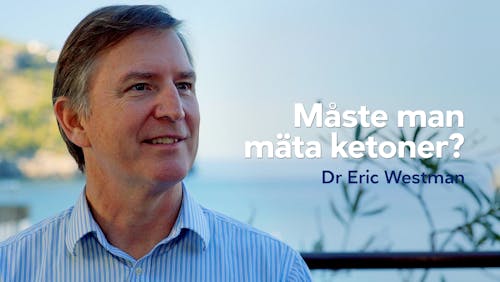
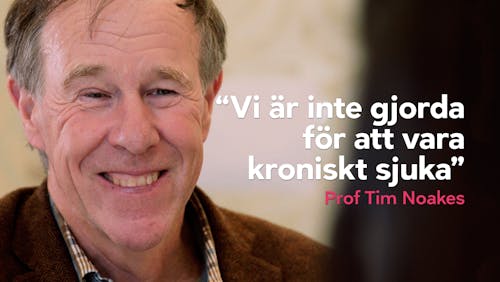
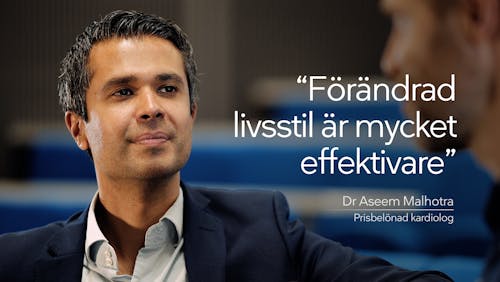
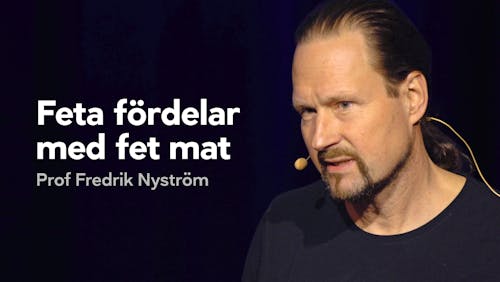
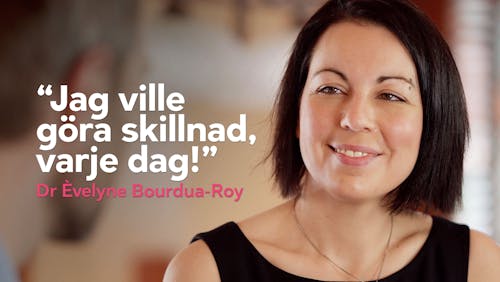


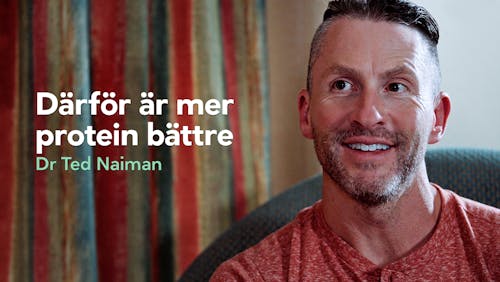
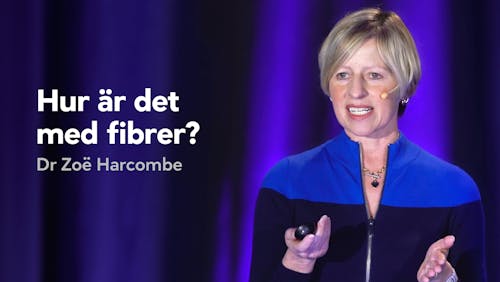



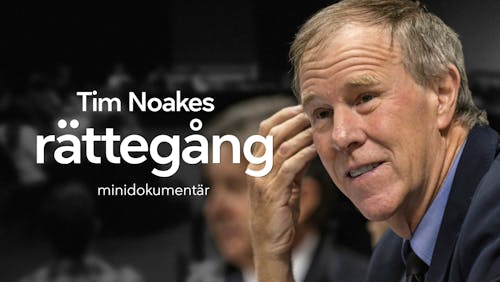
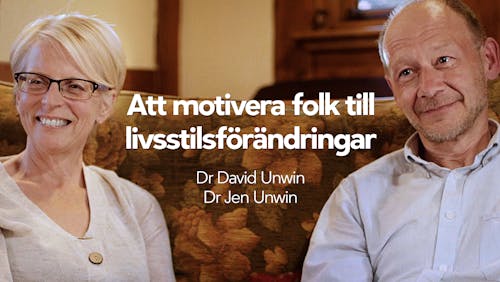
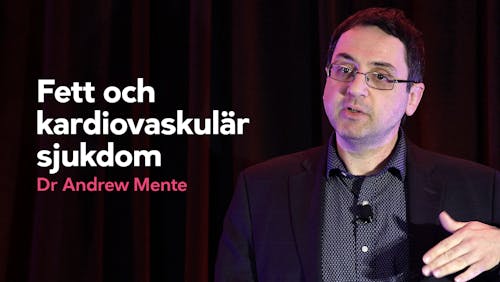
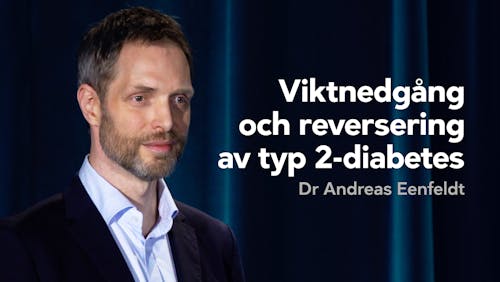
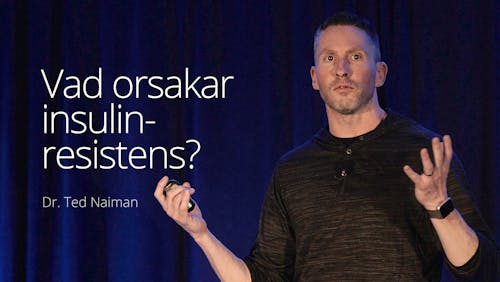
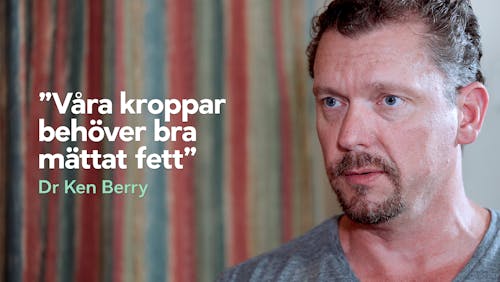
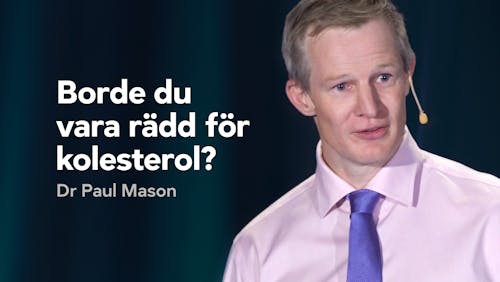
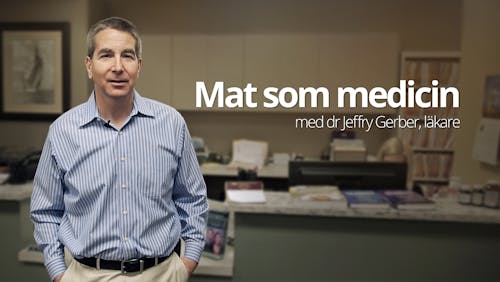
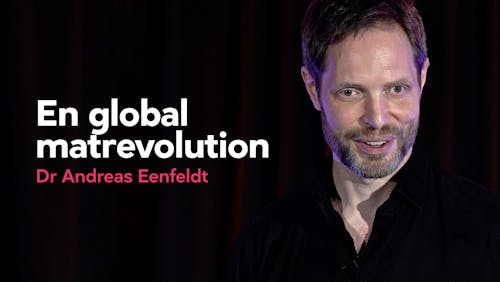
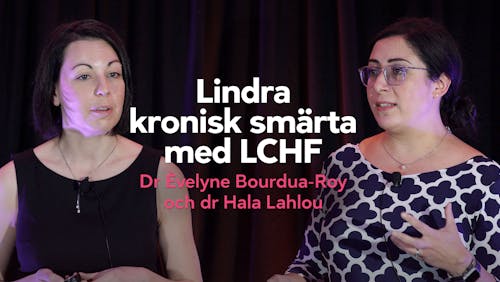
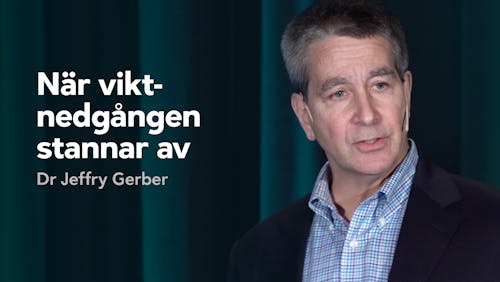

 Kurser
Kurser





